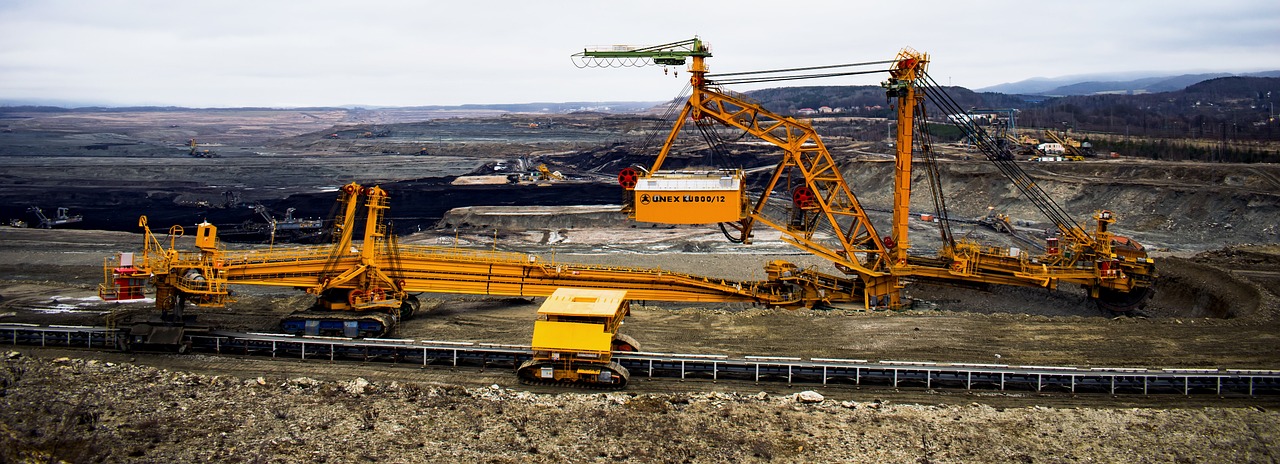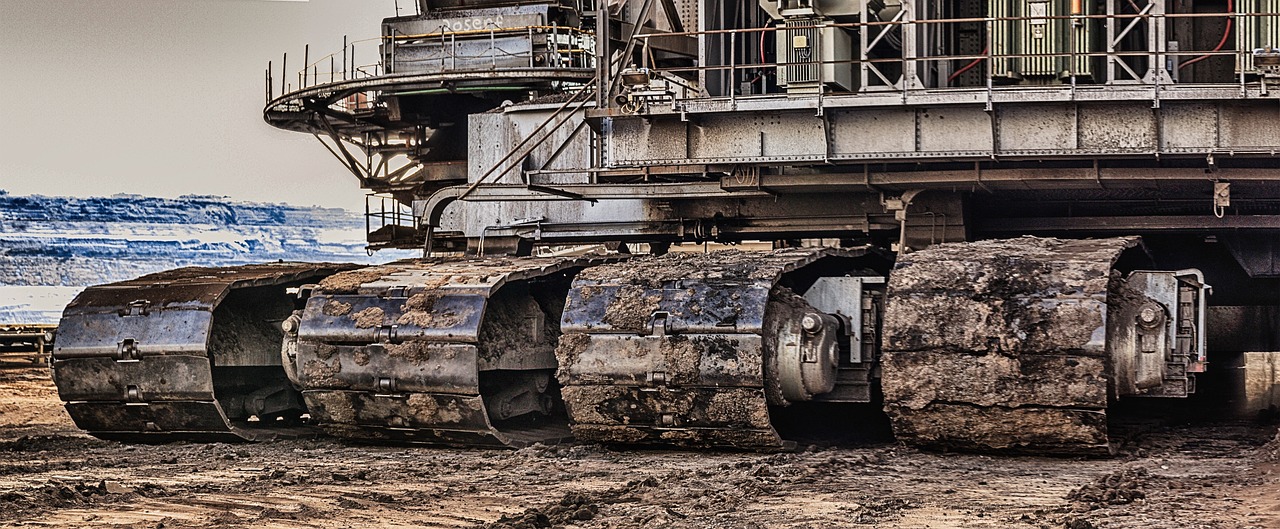The Future of Crypto Mining - Is It Sustainable?
The world of cryptocurrency has taken the financial landscape by storm, with mining playing a pivotal role in this digital revolution. However, as we plunge deeper into the intricacies of crypto mining, a pressing question arises: Is it sustainable? This article delves into the sustainability of crypto mining, examining its environmental impact, technological advancements, regulatory challenges, and the future trends that may shape the industry. With the rise of digital currencies, understanding the balance between profitability and ecological responsibility has never been more crucial.
Crypto mining is notorious for its significant environmental consequences, particularly regarding energy consumption and carbon emissions. The process of validating transactions and adding them to the blockchain demands an immense amount of computational power, which translates to high energy usage. For instance, the Bitcoin network alone consumes more electricity annually than some small countries. This section will delve into the ecological footprint of various mining practices, highlighting the stark reality of energy-intensive operations and their contribution to global warming.
Fortunately, the landscape of crypto mining is not static. Emerging technologies are transforming the industry, enhancing efficiency and reducing energy usage. Innovations such as ASIC (Application-Specific Integrated Circuit) miners and advanced cooling systems are paving the way for a more sustainable future. These technologies not only improve the hash rate but also minimize the overall energy consumption per transaction. As we explore these advancements, it's essential to recognize that the future of mining could be drastically different from its current state.
Utilizing renewable energy sources for mining operations is crucial for sustainability. Imagine a world where solar panels power mining rigs, or wind turbines supply the energy necessary for validating transactions. This vision is becoming a reality as miners increasingly turn to solar, wind, and hydro power to fuel their operations. By harnessing these clean energy sources, miners can significantly reduce their carbon footprint and contribute to a more sustainable ecosystem. The integration of renewables not only benefits the environment but can also lead to long-term cost savings for mining operations.
Several companies have adopted eco-friendly mining methods, proving that sustainability is achievable. For instance, HydroMiner, a company based in Austria, utilizes hydroelectric power to run its mining operations. This approach has allowed them to maintain low energy costs while minimizing their environmental impact. Another notable example is Genesis Mining, which has invested in renewable energy projects to offset its carbon emissions. These case studies highlight the potential for sustainable practices in the industry, serving as a beacon of hope for the future of crypto mining.
Despite the benefits, there are obstacles to implementing renewable energy in crypto mining. Economic factors, such as the initial investment required for renewable infrastructure, can be a significant barrier for many miners. Additionally, logistical challenges, like the availability of renewable resources and the geographic location of mining operations, complicate the transition. Addressing these challenges is essential for creating a sustainable mining ecosystem that balances profitability with environmental responsibility.
Government regulations play a vital role in shaping the future of crypto mining. As concerns about the environmental impact of mining grow, many governments are considering stricter regulations aimed at reducing carbon emissions. This section outlines current regulations and potential legislative changes impacting sustainability. For example, some jurisdictions have started to impose taxes on energy consumption for mining operations, while others are incentivizing the use of renewable energy sources. Understanding this regulatory landscape is critical for miners who wish to navigate the complexities of compliance while pursuing sustainable practices.
The landscape of crypto mining is continually evolving. As technology advances and public awareness of environmental issues increases, several future trends could influence the sustainability and viability of mining activities. For instance, the rise of proof-of-stake mechanisms offers an alternative to energy-intensive proof-of-work systems, potentially reducing the overall energy requirements for validating transactions. Additionally, community-driven initiatives and partnerships between miners and environmental organizations could foster a more sustainable approach to mining.
Fluctuating cryptocurrency prices can affect mining profitability and practices. When prices soar, miners are incentivized to invest in more energy-intensive operations, which can exacerbate environmental concerns. Conversely, during market downturns, many miners may cut costs by reducing energy consumption or even shutting down operations temporarily. This subsection analyzes how market dynamics influence mining sustainability, emphasizing the need for miners to adapt to changing economic conditions while remaining environmentally conscious.
Collaboration between miners, communities, and industry leaders is essential for sustainable practices. Several initiatives aimed at promoting eco-friendly mining solutions are already underway, such as the Crypto Climate Accord, which seeks to transition the crypto industry to renewable energy. By working together, stakeholders can develop best practices and share resources that encourage sustainable mining efforts. This section explores these initiatives, showcasing the potential for a united front in the fight for a greener future in crypto mining.
- What is crypto mining? Crypto mining is the process of validating transactions and adding them to a blockchain, typically requiring significant computational power.
- How does crypto mining impact the environment? Crypto mining consumes large amounts of energy and can lead to high carbon emissions, contributing to climate change.
- Are there sustainable mining practices? Yes, many companies are adopting renewable energy sources and innovative technologies to reduce their environmental impact.
- What are some challenges to sustainable mining? Economic factors, logistical issues, and regulatory hurdles can impede the widespread adoption of sustainable practices in crypto mining.
- How can I support sustainable crypto mining? Supporting cryptocurrencies that prioritize eco-friendly practices and advocating for renewable energy use in the industry are great ways to contribute.

Environmental Impact of Crypto Mining
The environmental consequences of crypto mining are profound, and it's a topic that has sparked heated debates across the globe. As the popularity of cryptocurrencies skyrockets, so does the demand for mining—a process that requires an immense amount of energy. In fact, it’s estimated that Bitcoin mining alone consumes more electricity than some entire countries!
But why is this the case? Well, crypto mining relies on complex algorithms that require powerful computers to solve cryptographic puzzles. This process, known as proof-of-work, is energy-intensive and leads to a significant carbon footprint. According to recent studies, the carbon emissions from Bitcoin mining are comparable to those of the entire nation of New Zealand. This staggering statistic raises an important question: Is the pursuit of digital currency worth the environmental cost?
Let's break down the major components of crypto mining's environmental impact:
- Energy Consumption: Mining operations often run 24/7, consuming vast amounts of electricity. The sources of this energy can vary widely, from fossil fuels to renewable energy.
- Carbon Emissions: Depending on the energy source, mining can contribute significantly to greenhouse gas emissions. Regions that rely heavily on coal for electricity see the most severe impacts.
- Electronic Waste: The rapid pace of technological advancement means that mining hardware becomes obsolete quickly, leading to increased electronic waste that can be challenging to recycle.
It's crucial to recognize that the environmental impact isn't uniform across the globe. In areas where miners can access cheaper, cleaner energy, such as hydroelectric power, the ecological footprint can be minimized. However, in regions heavily reliant on coal, the situation is dire. This disparity highlights a major challenge: how can the industry shift towards more sustainable practices?
To illustrate the energy consumption involved, consider the following table that compares the energy usage of Bitcoin mining with that of traditional banking systems:
| System | Annual Energy Consumption (TWh) |
|---|---|
| Bitcoin Mining | ~100 |
| Traditional Banking System | ~263 |
As we can see, while Bitcoin mining is a significant energy consumer, traditional banking systems are not far behind. This comparison raises another question: Are there more sustainable alternatives to both systems? Many advocates argue that a shift towards proof-of-stake mechanisms, which require significantly less energy than proof-of-work, could be a solution.
In conclusion, the environmental impact of crypto mining is a complex issue that requires urgent attention and action. As the industry continues to evolve, the focus must shift towards finding solutions that balance technological advancement with environmental sustainability. Only then can we hope to harness the benefits of cryptocurrencies without sacrificing our planet's health.
- What is crypto mining? Crypto mining is the process of verifying transactions on a blockchain network, which involves solving complex mathematical problems to add new blocks to the chain.
- Why does crypto mining consume so much energy? The process relies on powerful computers that run continuously to solve cryptographic puzzles, which requires significant amounts of electricity.
- Are there eco-friendly alternatives to traditional mining? Yes, methods like proof-of-stake and utilizing renewable energy sources are being explored to reduce the environmental impact of mining.

Technological Innovations in Mining
The world of crypto mining is undergoing a seismic shift, driven by technological innovations that promise to reshape the landscape of this once energy-intensive industry. As miners grapple with the environmental implications of their operations, the focus is now on leveraging cutting-edge technologies to enhance efficiency and minimize energy consumption. Imagine a mining operation that not only secures transactions but also does so with a much lower ecological footprint—this is becoming a reality.
One of the most exciting developments is the advent of ASIC (Application-Specific Integrated Circuit) miners, which are specifically designed for cryptocurrency mining. Unlike traditional GPUs that can be used for various tasks, ASIC miners are tailored to perform a single function, making them significantly more efficient. This means they can do the same amount of work while consuming less power. As a result, miners are increasingly investing in these specialized machines to boost their profitability while reducing their energy consumption.
Additionally, the rise of cloud mining services is changing the game. Instead of setting up their own rigs, miners can now rent hashing power from remote data centers. This not only reduces the need for physical hardware but also allows for better energy management, as these facilities often utilize renewable energy sources to power their operations. By decentralizing mining activities, cloud mining can lead to a more sustainable model that alleviates some of the environmental burdens associated with traditional mining.
Moreover, advancements in software algorithms have also played a crucial role in improving mining efficiency. New algorithms are being developed to optimize the mining process, allowing for faster transaction processing and lower energy consumption. For instance, the implementation of proof-of-stake mechanisms in various cryptocurrencies is a significant shift from the energy-heavy proof-of-work model. This transition not only enhances security but also drastically reduces the energy required for mining, paving the way for a more sustainable future.
The integration of renewable energy sources into mining operations is perhaps one of the most promising innovations in the industry. Miners are increasingly turning to solar, wind, and hydro power to fuel their operations. For example, some companies are setting up solar farms to power their mining rigs, harnessing the sun's energy to drastically cut down on electricity costs and carbon emissions.
To illustrate this point, consider the following table showcasing various renewable energy solutions adopted by mining companies:
| Energy Source | Benefits | Example Companies |
|---|---|---|
| Solar Energy | Low operational costs, reduced carbon footprint | Hive Blockchain, Bitfury |
| Wind Energy | Consistent energy supply, eco-friendly | Greenidge Generation, Northern Bitcoin |
| Hydro Power | High efficiency, low environmental impact | Bitmain, HydroMiner |
While the benefits of renewable energy in mining are clear, the transition is not without its hurdles. The initial setup costs for renewable energy infrastructure can be significant, and not all regions have equal access to these resources. However, as technology advances and costs decrease, the potential for widespread adoption grows.
In conclusion, the future of crypto mining is bright, thanks to the ongoing technological innovations that are making operations more efficient and sustainable. As these technologies continue to evolve, they will not only help miners reduce their environmental impact but also ensure that crypto mining remains a viable industry for years to come.
- What is the primary environmental concern with crypto mining? The major concern is the high energy consumption and resulting carbon emissions associated with traditional mining operations.
- How do ASIC miners differ from traditional GPUs? ASIC miners are specialized hardware designed exclusively for mining specific cryptocurrencies, making them more energy-efficient than general-purpose GPUs.
- Can renewable energy sources fully power mining operations? While not all mining operations can be entirely powered by renewable energy, many are increasingly integrating these sources to reduce their carbon footprint.
- What role do software algorithms play in mining efficiency? Advanced algorithms can optimize mining processes, leading to faster transactions and lower energy consumption, contributing to overall sustainability.

Renewable Energy Solutions
As the world grapples with the pressing challenge of climate change, the conversation around in crypto mining has never been more critical. Traditional mining practices, which often rely on fossil fuels, have come under fire for their significant carbon footprints. However, an exciting shift is underway as miners increasingly turn to renewable energy sources to power their operations. This transition not only helps mitigate environmental damage but also offers a pathway to more sustainable mining practices.
Renewable energy sources like solar, wind, and hydro power are gaining traction in the crypto mining industry. For instance, solar energy is particularly appealing due to its abundance and declining costs. Imagine vast fields of solar panels powering rows of mining rigs, efficiently converting sunlight into the digital gold of cryptocurrencies. Similarly, wind energy harnesses the power of nature, turning gusts into electricity that can keep mining operations running smoothly. Hydro power, on the other hand, utilizes the flow of water to generate energy, often providing a consistent and reliable power source for miners located near rivers or dams.
Many miners are now establishing operations in regions where renewable energy is both plentiful and inexpensive. For example, places with ample sunlight or strong wind currents can offer miners a significant cost advantage. This approach not only reduces operational costs but also aligns with a growing global movement towards sustainability. As a result, miners can enjoy the dual benefits of lower energy bills and a reduced environmental impact.
To illustrate the potential of renewable energy in crypto mining, let's take a look at a few notable case studies:
| Company | Energy Source | Location | Impact |
|---|---|---|---|
| Genesis Mining | Wind | Iceland | Utilizes geothermal and hydroelectric energy, significantly reducing carbon emissions. |
| Hut 8 Mining Corp | Solar | Canada | Integrates solar panels into mining operations, decreasing reliance on non-renewable energy. |
| Bitfury | Hydro | Georgia | Employs hydroelectric power to mine Bitcoin, minimizing environmental impact. |
While the prospects of renewable energy in crypto mining are bright, it's essential to acknowledge the challenges that come with adopting these solutions. Many miners face economic and logistical hurdles when transitioning to renewable energy. For instance, the initial investment in renewable infrastructure can be daunting, and miners may struggle to find locations that offer both renewable energy and favorable regulatory environments. Additionally, the intermittent nature of some renewable sources, like solar and wind, can lead to concerns about reliability and consistency in energy supply.
Despite these challenges, the potential benefits of renewable energy in crypto mining are too significant to ignore. As technology advances and the cost of renewable energy continues to decline, more miners are likely to embrace these sustainable practices. The future of crypto mining may very well depend on our ability to harness the power of nature, striking a balance between profitability and environmental responsibility.
- What are the main renewable energy sources used in crypto mining? The most common sources include solar, wind, and hydro power.
- How does renewable energy impact the cost of mining? Utilizing renewable energy can significantly lower operational costs, as these energy sources are often cheaper in the long run.
- Are there any challenges associated with using renewable energy for mining? Yes, challenges include initial investment costs and the reliability of energy supply, particularly with solar and wind.
- Can renewable energy make crypto mining more sustainable? Absolutely! By reducing reliance on fossil fuels, renewable energy can greatly decrease the environmental impact of mining operations.

Case Studies of Green Mining
The shift towards sustainable practices in crypto mining is not just a theoretical concept; it's happening right now, and several companies are leading the charge. These pioneers are not only proving that it's possible to mine cryptocurrencies while being environmentally responsible, but they are also setting benchmarks for the entire industry. Let's take a closer look at some notable case studies that exemplify green mining practices.
One standout example is Hut 8 Mining Corp, based in Canada. This company has made significant strides in integrating renewable energy into its operations. By partnering with local hydroelectric facilities, Hut 8 has been able to power its mining rigs with clean energy, drastically reducing its carbon footprint. The use of hydroelectric power not only lowers operational costs but also positions Hut 8 as a leader in sustainable mining practices. In fact, they have reported that over 90% of their energy consumption comes from renewable sources.
Another fascinating case is that of Genesis Mining, which operates on a global scale. They have implemented a unique approach by utilizing excess energy from renewable sources. For instance, in Iceland, where geothermal energy is abundant, Genesis Mining has set up operations that tap into this renewable resource. This strategy not only minimizes energy waste but also showcases how regions rich in renewable resources can play a pivotal role in the future of crypto mining.
Furthermore, Bitfury, a leading blockchain technology company, has developed a new mining facility that operates on a combination of solar and hydroelectric power. Their innovative approach involves using solar panels to capture energy during peak sunlight hours, while hydroelectric power provides a steady energy supply. This dual energy strategy allows Bitfury to maintain high mining efficiency while significantly reducing reliance on fossil fuels.
To illustrate the impact of these green initiatives, consider the following table that summarizes key metrics from these companies:
| Company | Renewable Energy Source | Percentage of Renewable Energy Used | Location |
|---|---|---|---|
| Hut 8 Mining Corp | Hydroelectric | 90% | Canada |
| Genesis Mining | Geothermal | 80% | Iceland |
| Bitfury | Solar & Hydroelectric | 75% | Multiple Locations |
These case studies not only highlight the potential for sustainable practices in crypto mining but also serve as an inspiration for others in the industry. As more companies adopt similar strategies, the overall environmental impact of crypto mining can be significantly mitigated. The journey towards sustainability is a marathon, not a sprint, but with each step taken by these innovators, the finish line becomes more attainable.
In conclusion, the examples set by Hut 8, Genesis Mining, and Bitfury demonstrate that combining technology with renewable energy can lead to a greener future for crypto mining. As the industry evolves, these case studies will likely serve as foundational models for future operations, proving that profitability and sustainability can indeed go hand in hand.
- What is green mining? Green mining refers to mining practices that minimize environmental impact, often by using renewable energy sources and sustainable methods.
- How does renewable energy help in crypto mining? Utilizing renewable energy reduces carbon emissions and operational costs, making mining more sustainable and environmentally friendly.
- Are there any regulations regarding sustainable mining? Many countries are starting to implement regulations that encourage the use of renewable energy in mining operations, promoting sustainability.
- Can small miners adopt green practices? Yes, small miners can adopt green practices by investing in renewable energy sources and optimizing their energy consumption.

Challenges of Adopting Renewables
While the potential for renewable energy in crypto mining is bright, the road to adoption is paved with challenges that miners must navigate. One of the most significant hurdles is the initial investment cost associated with transitioning to renewable energy sources. Setting up solar panels, wind turbines, or hydroelectric systems requires substantial upfront capital. Many miners, especially smaller operations, may find it daunting to allocate funds for such investments, particularly when they are already facing fluctuating cryptocurrency prices and market volatility.
Another challenge is the intermittency of renewable energy sources. Unlike traditional fossil fuels that provide a constant energy supply, renewables like solar and wind can be unpredictable. For instance, solar energy generation is heavily dependent on weather conditions and daylight hours, while wind energy fluctuates based on wind patterns. This inconsistency can lead to downtime in mining operations, causing miners to miss out on potential earnings during critical periods.
Moreover, the infrastructure needed to support renewable energy systems can be lacking in certain regions. Many mining operations are located in remote areas where grid connectivity is limited, making it difficult to harness renewable resources effectively. Without a robust infrastructure in place, miners may struggle to integrate renewable energy into their operations, leading to a reliance on non-renewable sources that diminish their sustainability efforts.
Additionally, there are regulatory and policy challenges that miners must contend with when adopting renewable energy. Government incentives for renewable energy can vary significantly by region, and in some cases, the lack of supportive policies can hinder the growth of renewable mining practices. Miners may also face bureaucratic red tape when seeking permits for renewable energy projects, adding another layer of complexity to the transition process.
Lastly, there is a need for education and awareness within the mining community about the benefits and implementation of renewable energy solutions. Many miners may not be aware of the technological advancements that can facilitate the adoption of renewables or the long-term cost savings associated with them. This gap in knowledge can slow the transition to more sustainable practices, as miners remain hesitant to change established methods.
In conclusion, while the challenges of adopting renewable energy in crypto mining are significant, they are not insurmountable. By addressing these obstacles through innovation, collaboration, and supportive policies, the industry can move towards a more sustainable future.
- What are the main challenges in adopting renewable energy for crypto mining?
The main challenges include high initial investment costs, energy intermittency, lack of infrastructure, regulatory hurdles, and a need for better education within the mining community. - How can miners overcome the cost barrier of renewable energy?
Miners can explore financing options, government grants, and partnerships with renewable energy providers to help mitigate the initial costs. - Are there successful examples of renewable energy in crypto mining?
Yes, several companies have successfully integrated solar, wind, and hydro power into their mining operations, demonstrating that sustainable practices are achievable. - What role do regulations play in renewable energy adoption?
Government regulations can either facilitate or hinder the adoption of renewable energy solutions, depending on the incentives and support provided to miners.

Regulatory Landscape for Crypto Mining
The regulatory landscape for crypto mining is akin to navigating a labyrinth—complex, ever-changing, and fraught with challenges. As the popularity of cryptocurrencies has surged, so too has the scrutiny from governments around the globe. This scrutiny is primarily driven by concerns over the environmental impact of mining, energy consumption, and the potential for illicit activities. Each country has adopted its own set of regulations, leading to a patchwork of laws that can be confusing for miners trying to operate within legal boundaries.
In many regions, regulatory bodies are grappling with how to classify cryptocurrencies and the mining processes associated with them. For instance, in the United States, the regulatory approach varies significantly from state to state. Some states, like Texas, have embraced crypto mining as a way to boost their economies, offering incentives for miners to set up operations. Conversely, states like New York have imposed moratoriums on new mining operations, citing environmental concerns.
Meanwhile, in Europe, the European Union is working towards a cohesive regulatory framework that addresses energy consumption and sustainability in crypto mining. The EU's Markets in Crypto-Assets (MiCA) regulation aims to create a unified approach, ensuring that crypto activities are conducted transparently and responsibly. This regulatory push is crucial, as it seeks to balance innovation with environmental protection and consumer safety.
Moreover, countries like China have taken a more aggressive stance, outright banning crypto mining in a bid to reduce energy consumption and carbon emissions. This has led to a significant shift in the global mining landscape, with miners relocating to more crypto-friendly jurisdictions. The question remains: how will these regulations evolve as the industry matures? It's a dynamic situation that requires miners to stay informed and adaptable.
To illustrate the varying approaches to crypto mining regulations, consider the following table:
| Country | Regulatory Approach | Impact on Mining |
|---|---|---|
| United States | Varied by state; some promote, others restrict | Encourages relocation to favorable states |
| China | Complete ban on mining | Mass exodus of miners to other countries |
| European Union | Developing unified regulations | Potential for increased compliance costs |
As regulations continue to evolve, miners face the challenge of ensuring compliance while maintaining profitability. It’s essential for mining operations to stay ahead of the curve, not only to avoid penalties but also to align with the growing demand for sustainable practices. The regulatory environment will undoubtedly shape the future of crypto mining, making it imperative for stakeholders to engage with policymakers and advocate for balanced regulations that promote innovation while safeguarding the environment.
- What are the main regulatory challenges facing crypto miners today? The primary challenges include varying regulations across regions, compliance costs, and restrictions on energy consumption.
- How do regulations impact the profitability of crypto mining? Regulations can increase operational costs and limit where miners can set up, affecting overall profitability.
- Are there any countries that are particularly friendly towards crypto mining? Yes, countries like Texas in the U.S. and some regions in Canada are considered crypto-friendly due to their supportive regulatory environments.

Future Trends in Crypto Mining
The landscape of crypto mining is continually evolving, and as we look to the future, several trends are emerging that could significantly influence the sustainability and viability of mining activities. One of the most critical factors driving these changes is the increasing awareness of the environmental impact associated with traditional mining practices. As a result, miners are being pushed to adopt more sustainable methods to maintain their operations in a world that is increasingly prioritizing ecological responsibility.
One major trend is the shift towards decentralized mining operations. Instead of relying on massive mining farms that consume enormous amounts of energy, smaller, localized operations are gaining traction. These decentralized setups not only reduce the carbon footprint but also allow for more efficient energy use by leveraging local renewable resources. Imagine a network of small miners working together, sharing resources, and optimizing their energy consumption—this is the future that many in the industry are envisioning.
Moreover, the integration of artificial intelligence (AI) and machine learning into mining operations is another trend to watch. These technologies can analyze vast amounts of data to optimize mining processes, predict equipment failures, and even adjust energy consumption in real-time. By implementing AI, miners can not only enhance their operational efficiency but also reduce waste and energy use, leading to a more sustainable approach overall.
Another significant trend is the growing collaboration between the crypto mining industry and renewable energy providers. As miners seek to mitigate their environmental impact, partnerships with solar, wind, and hydroelectric companies are becoming more common. This collaboration can create a win-win situation: miners gain access to cleaner energy sources while renewable energy providers benefit from a stable demand for their services. For instance, some mining operations are now being powered entirely by solar energy, showcasing the potential for a greener future in crypto mining.
However, with these advancements come challenges. The economic landscape of crypto mining is highly volatile, and fluctuations in cryptocurrency prices can significantly impact profitability. As a result, miners must remain agile and adapt to market dynamics. This unpredictability can make it difficult for miners to invest in sustainable technologies, as the return on investment may not be immediate. Thus, understanding the correlation between cryptocurrency prices and mining practices is essential for the industry's future.
Furthermore, community and industry initiatives are gaining momentum. Collaboration between miners, local communities, and industry leaders is essential for promoting eco-friendly mining solutions. Initiatives aimed at reducing the environmental impact of mining, such as community solar projects or collective purchasing of renewable energy, are becoming more prevalent. By working together, stakeholders can create a more sustainable mining ecosystem that benefits everyone involved.
In conclusion, the future of crypto mining is poised for transformation. With an emphasis on sustainability, technological advancements, and collaborative efforts, the industry is moving towards a more responsible and eco-friendly approach. As miners navigate these changes, they will need to remain adaptable and innovative, ensuring that they not only survive but thrive in this rapidly evolving landscape.
- What are the main environmental concerns associated with crypto mining?
The primary concerns include high energy consumption, carbon emissions, and the ecological impact of mining operations on local environments.
- How can renewable energy improve the sustainability of crypto mining?
By utilizing renewable energy sources such as solar, wind, and hydro power, miners can significantly reduce their carbon footprint and reliance on fossil fuels.
- What role does technology play in making mining more sustainable?
Emerging technologies like AI and machine learning can optimize mining processes, reduce waste, and enhance overall efficiency, contributing to sustainability.
- Are there any successful examples of green mining practices?
Yes, several companies have adopted eco-friendly mining methods, such as using solar energy or collaborating with renewable energy providers, showcasing the potential for sustainable practices in the industry.

Impact of Cryptocurrency Prices
The world of cryptocurrency is notoriously volatile, with prices fluctuating dramatically within short periods. This volatility not only affects individual investors but also has profound implications for the entire crypto mining industry. When the prices of cryptocurrencies soar, mining becomes highly profitable, attracting new miners and increasing competition. Conversely, when prices plummet, many miners may find it unfeasible to continue their operations, leading to a significant reduction in mining activities.
To illustrate this point, let's consider a scenario: imagine a miner who invested heavily in advanced hardware and electricity contracts when Bitcoin was trading at an all-time high of $60,000. As the price drops to $20,000, the miner faces a stark reality. The costs associated with mining—electricity, maintenance, and hardware depreciation—remain constant, but the revenue generated from mining rewards diminishes significantly. This situation can lead to a cascade of effects, including:
- Increased Difficulty: As more miners enter the market during price surges, the network's difficulty adjusts, making it harder for individual miners to earn rewards.
- Operational Shutdowns: Miners with high operational costs may shut down their rigs, reducing the overall hash rate of the network.
- Environmental Impact: A sudden drop in mining activities can lead to a temporary reduction in energy consumption, which may positively impact the environment, but it can also lead to wasted resources and hardware.
Moreover, the profitability of mining is closely linked to the energy costs in different regions. Miners in areas with cheaper electricity can weather price drops better than those in regions with higher energy costs. This geographical disparity can create a competitive advantage for miners operating in more favorable conditions. For instance, countries like Iceland, with abundant geothermal energy, or regions in Canada, where hydroelectric power is prevalent, attract miners looking to maximize their profits.
In the long run, the correlation between cryptocurrency prices and mining practices raises critical questions about sustainability. As the market matures, we may see a shift towards more stable pricing mechanisms, which could help miners plan their operations more effectively. However, until then, the unpredictable nature of cryptocurrency prices will continue to shape the mining landscape, forcing miners to adapt or risk obsolescence.
Q: How do cryptocurrency prices affect mining profitability?
A: Higher cryptocurrency prices typically lead to increased profitability for miners, attracting more participants and intensifying competition. Conversely, lower prices can make mining unprofitable, leading to operational shutdowns.
Q: What role do energy costs play in mining sustainability?
A: Energy costs are a critical factor in mining sustainability. Regions with lower energy costs can support more miners, while higher costs can lead to reduced profitability and increased environmental impact.
Q: Can mining practices adapt to price fluctuations?
A: Yes, miners often adjust their operations based on market conditions, including scaling back during price drops or investing in more efficient technologies when prices are high.

Community and Industry Initiatives
In the ever-evolving world of crypto mining, the importance of cannot be overstated. As the environmental concerns surrounding mining practices become more pronounced, miners, developers, and industry leaders are recognizing the need for a collective approach to sustainability. So, what exactly does this look like? Well, it’s a fascinating blend of collaboration, innovation, and a shared vision for a greener future. Imagine a team of miners, environmentalists, and tech developers coming together, each bringing their unique expertise to the table to create solutions that not only benefit their operations but also the planet.
One of the most exciting developments in this space is the formation of coalitions and partnerships aimed at promoting eco-friendly practices. For instance, some mining companies are joining forces with renewable energy providers to establish projects that harness solar, wind, or hydro energy specifically for mining operations. This synergy not only reduces the carbon footprint of mining activities but also demonstrates a commitment to sustainable practices that resonate with environmentally-conscious investors and consumers.
Moreover, community initiatives play a crucial role in raising awareness and fostering a culture of sustainability. Local groups are organizing educational workshops and seminars to inform miners about the benefits of adopting greener technologies. These initiatives often include hands-on demonstrations, which can be incredibly effective in showcasing how simple changes can lead to significant environmental benefits. For example, a workshop might cover the installation of energy-efficient mining rigs or the integration of solar panels into existing setups, illustrating the tangible impacts of these changes.
Additionally, industry leaders are increasingly focusing on transparency and accountability. By sharing their sustainability goals and progress with the public, they not only build trust but also inspire others in the industry to follow suit. Many companies are now publishing annual sustainability reports that outline their energy consumption, carbon emissions, and the steps they are taking to mitigate their environmental impact. This level of transparency is vital for fostering a community-oriented approach to mining, as it encourages others to contribute to the collective goal of sustainability.
As we look to the future, it’s clear that the path to sustainable crypto mining will require ongoing collaboration between various stakeholders. Whether it’s through shared resources, joint ventures, or community-driven initiatives, the goal remains the same: to create a mining ecosystem that prioritizes the health of our planet while still allowing for technological advancement and economic growth. The question is not whether we can achieve this, but rather, how quickly can we mobilize our collective efforts to make it a reality?
- What are community initiatives in crypto mining? Community initiatives involve local groups and organizations working together to promote sustainable mining practices through education and collaboration.
- How can miners participate in these initiatives? Miners can engage by joining local workshops, forming partnerships with renewable energy providers, and being transparent about their sustainability efforts.
- Why is collaboration important in the crypto mining industry? Collaboration fosters innovation, allows for resource sharing, and helps create a unified approach to addressing environmental challenges.
- What role do industry leaders play in promoting sustainability? Industry leaders can set examples through their sustainability practices, share knowledge, and encourage others in the industry to adopt eco-friendly technologies.
Frequently Asked Questions
- What is the environmental impact of crypto mining?
The environmental impact of crypto mining is significant, primarily due to its high energy consumption and resultant carbon emissions. Mining operations often rely on fossil fuels, which contributes to global warming and ecological degradation. However, there are ongoing efforts to mitigate these effects through the adoption of renewable energy sources.
- How are technological innovations improving crypto mining sustainability?
Technological innovations are playing a crucial role in enhancing the sustainability of crypto mining. New mining hardware and software solutions are being developed to increase efficiency and reduce energy usage. For instance, advancements in ASIC miners and the implementation of more efficient cooling systems are helping miners operate with a lower ecological footprint.
- What renewable energy sources are being used in crypto mining?
Crypto miners are increasingly turning to renewable energy sources such as solar, wind, and hydroelectric power to reduce their environmental impact. By harnessing these sustainable energy options, miners can significantly lower their carbon emissions and contribute to a greener future for the industry.
- Are there successful case studies of eco-friendly mining practices?
Yes, several companies have successfully adopted eco-friendly mining practices. For example, some mining operations are using excess energy from renewable sources or partnering with local energy providers to ensure their operations are sustainable. These case studies highlight the potential for the industry to shift towards more environmentally responsible practices.
- What challenges do miners face when adopting renewable energy?
While the benefits of renewable energy are clear, miners face several challenges in implementation. Economic factors, such as the high initial costs of renewable infrastructure and fluctuating energy prices, can deter miners from making the switch. Additionally, logistical challenges like energy storage and grid access can complicate the transition to sustainable practices.
- How do government regulations affect crypto mining sustainability?
Government regulations significantly influence the sustainability of crypto mining. Laws regarding energy consumption, emissions, and the use of renewable resources can either promote or hinder eco-friendly practices. As regulations evolve, they may create new opportunities for miners to adopt more sustainable methods.
- How do cryptocurrency prices impact mining practices?
Fluctuating cryptocurrency prices can greatly affect mining profitability and practices. When prices are high, miners may invest in more energy-intensive operations to maximize profits. Conversely, during price dips, some miners may reduce their operations or even shut down, which can impact overall sustainability efforts within the industry.
- What initiatives exist to promote sustainable crypto mining?
There are numerous community and industry initiatives aimed at promoting sustainable crypto mining. Collaborations between miners, environmental organizations, and government bodies are being established to create best practices and share resources. These initiatives help raise awareness and encourage the adoption of eco-friendly mining solutions.


















